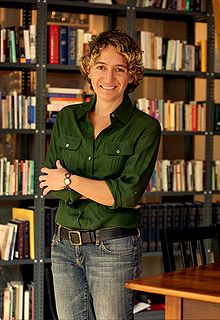The Really Big One
An earthquake will destroy a sizable portion of the coastal Northwest. The question is when.
Most people in the United States know just one fault line by name: the San Andreas, which runs nearly the length of California and is perpetually rumored to be on the verge of unleashing “the big one.” That rumor is misleading, no matter what the San Andreas ever does. Every fault line has an upper limit to its potency, determined by its length and width, and by how far it can slip. For the San Andreas, one of the most extensively studied and best understood fault lines in the world, that upper limit is roughly an 8.2—a powerful earthquake, but, because the Richter scale is logarithmic, only six per cent as strong as the 2011 event in Japan.
 Kathryn SchulzJust north of the San Andreas, however, lies another fault line. Known as the Cascadia subduction zone, it runs for seven hundred miles off the coast of the Pacific Northwest, beginning near Cape Mendocino, California, continuing along Oregon and Washington, and terminating around Vancouver Island, Canada. The “Cascadia” part of its name comes from the Cascade Range, a chain of volcanic mountains that follow the same course a hundred or so miles inland. The “subduction zone” part refers to a region of the planet where one tectonic plate is sliding underneath (subducting) another. Tectonic plates are those slabs of mantle and crust that, in their epochs-long drift, rearrange the earth’s continents and oceans. Most of the time, their movement is slow, harmless, and all but undetectable. Occasionally, at the borders where they meet, it is not.
Kathryn SchulzJust north of the San Andreas, however, lies another fault line. Known as the Cascadia subduction zone, it runs for seven hundred miles off the coast of the Pacific Northwest, beginning near Cape Mendocino, California, continuing along Oregon and Washington, and terminating around Vancouver Island, Canada. The “Cascadia” part of its name comes from the Cascade Range, a chain of volcanic mountains that follow the same course a hundred or so miles inland. The “subduction zone” part refers to a region of the planet where one tectonic plate is sliding underneath (subducting) another. Tectonic plates are those slabs of mantle and crust that, in their epochs-long drift, rearrange the earth’s continents and oceans. Most of the time, their movement is slow, harmless, and all but undetectable. Occasionally, at the borders where they meet, it is not.
Take your hands and hold them palms down, middle fingertips touching. Your right hand represents the North American tectonic plate, which bears on its back, among other things, our entire continent, from One World Trade Center to the Space Needle, in Seattle. Your left hand represents an oceanic plate called Juan de Fuca, ninety thousand square miles in size. The place where they meet is the Cascadia subduction zone. Now slide your left hand under your right one. That is what the Juan de Fuca plate is doing: slipping steadily beneath North America. When you try it, your right hand will slide up your left arm, as if you were pushing up your sleeve. That is what North America is not doing. It is stuck, wedged tight against the surface of the other plate...
- Tags:
- base-isolated
- Billy Balch
- Brian Atwater
- California
- Cascadia subduction zone
- Chief Louis Nookmis
- Chris Goldfinger
- coastal Pacific Northwest
- David Yamaguchi
- Doug Dougherty
- earthquake
- Federal Emergency Management Agency (FEMA)
- Hurricane Katrina
- Hurricane Sandy
- Ian Madin
- inundation zone
- Japan
- Jay Wilson
- Kathryn Schulz
- Kenji Satake
- Kevin Cupples
- Oregon Department of Geology and Mineral Industries (DOGAMI)
- Oregon Seismic Safety Policy Advisory Commission (OSSPAC)
- Oregon State University
- Richter scale
- Ruth Ludwin
- San Andreas fault
- seismic-safety technology
- tectonic plates
- Tohoku earthquake
- tsunami
- United States Geological Survey
- University of Washington
- Vancouver Island’s Pachena Bay people
- volcanos
- Washington State Park
- Yasutaka Ikeda
- Login to post comments